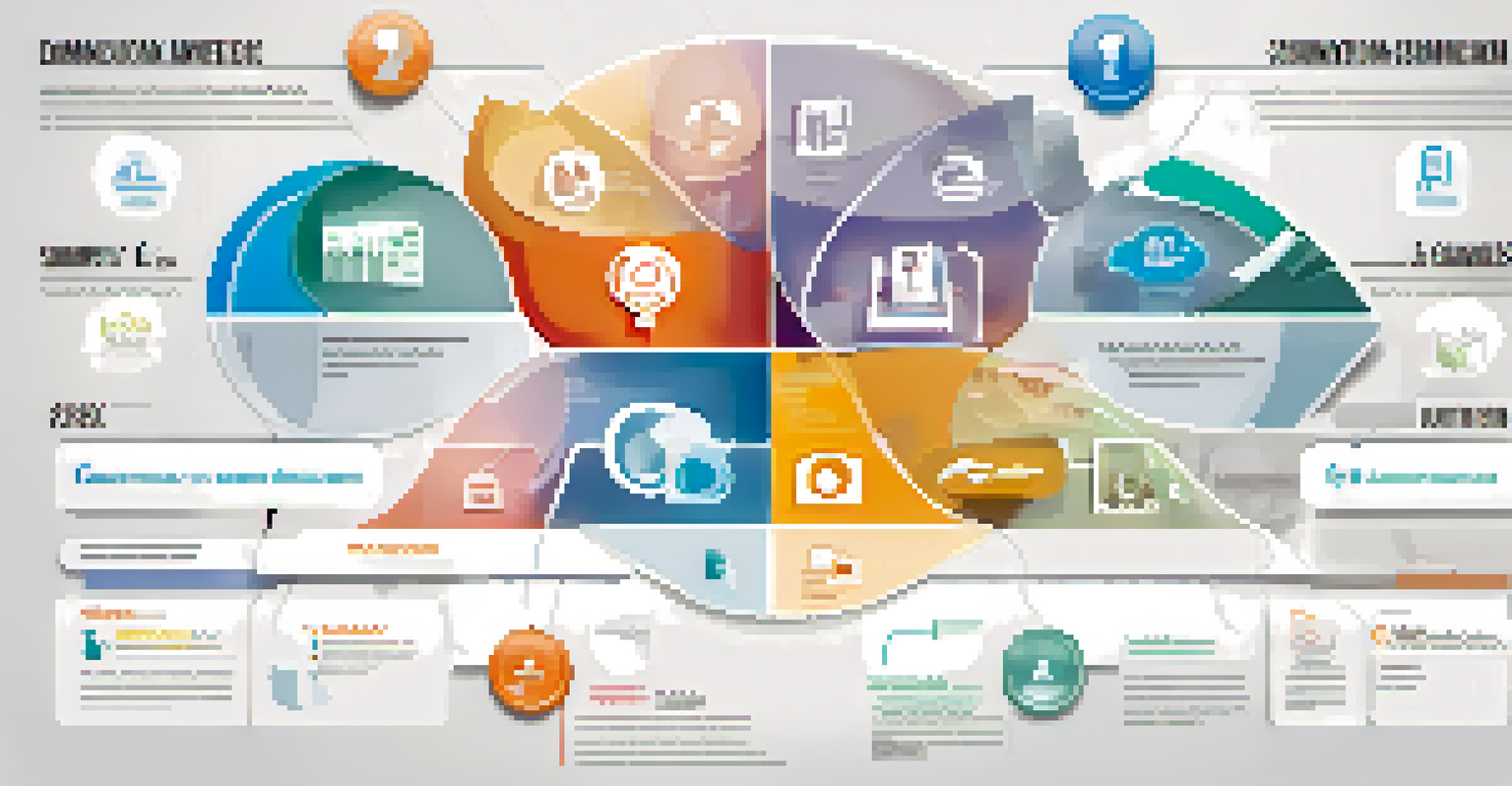The Power of Clarity: Communicating Ideas Effectively

Understanding the Importance of Clarity in Communication
Clarity is the backbone of effective communication. When we express our ideas clearly, they resonate better with our audience. Think of it this way: a well-lit room allows you to see everything clearly, while a dimly lit space leaves you guessing. Similarly, clear communication illuminates your thoughts and helps others understand your message without confusion.
The single biggest problem in communication is the illusion that it has taken place.
Without clarity, even the best ideas can fall flat. Imagine trying to cook a complex recipe without clear instructions; you might end up with a culinary disaster. Clarity ensures that your audience knows exactly what you mean, reducing the chances of misinterpretation and fostering better relationships.
Moreover, clarity in communication can save time and resources. When everyone understands the message, there's less back-and-forth and fewer mistakes. This efficiency is especially vital in business settings where time is money, underlining the need for clear communication in every interaction.
Key Elements of Clear Communication
To communicate clearly, you need to focus on a few essential elements: simplicity, structure, and audience awareness. Simplicity means using straightforward language that anyone can understand. For instance, instead of saying 'utilize,' just say 'use.' This small change can make a big difference in how your message is received.

Structure plays a crucial role as well. A well-organized message, whether written or spoken, guides your audience through your ideas seamlessly. Think of it like a roadmap; without clear directions, travelers can easily get lost. Organizing your thoughts logically helps others follow along and absorb the information provided.
Clarity Boosts Effective Communication
Clear communication ensures that ideas resonate with the audience, reducing misunderstandings and fostering better relationships.
Finally, being aware of your audience allows you to tailor your message to their needs and comprehension levels. Consider their background, interests, and familiarity with the topic. This awareness not only enhances clarity but also fosters connection, as your audience feels that you understand them.
Active Listening: A Partner in Clarity
Active listening is an often-overlooked aspect of clear communication. It involves fully concentrating on what is being said rather than just passively hearing the words. By engaging in active listening, you can clarify any uncertainties right away. This practice ensures that both parties are on the same page and reduces the chances of miscommunication.
Clarity affords focus.
For example, during a conversation, reflecting back what you’ve heard can demonstrate understanding and encourage clarity. Phrases like, 'What I hear you saying is...' can help confirm that you’ve grasped the message correctly. This not only shows respect for the speaker but also strengthens the overall communication process.
Moreover, active listening can lead to more productive discussions. When both parties feel heard and understood, they are more likely to share their thoughts openly, fostering a collaborative environment. This mutual respect enhances clarity in subsequent exchanges, making the communication cycle more effective.
The Role of Nonverbal Communication
Nonverbal communication plays a significant role in conveying clarity. Body language, facial expressions, and tone of voice can all enhance or detract from your message. For instance, maintaining eye contact can demonstrate confidence and sincerity, while crossed arms may suggest defensiveness or disinterest.
It’s essential to align your nonverbal cues with your words. If your verbal message is positive but your body language is closed off, it can create confusion. Think of a time when someone said they were 'fine' but their tone was anything but. This mismatch can lead to misunderstandings, highlighting the need for coherence between verbal and nonverbal signals.
Active Listening Enhances Understanding
Engaging in active listening allows for immediate clarification of uncertainties, leading to more effective exchanges.
Being aware of your nonverbal communication can significantly boost the clarity of your message. Practicing open and inviting body language can encourage others to engage more openly, creating a more transparent communication atmosphere. This alignment fosters trust and clarity in conversations.
Using Visual Aids to Enhance Clarity
Visual aids can be powerful tools for enhancing clarity in communication. Whether it's charts, graphs, slides, or infographics, visuals can help illustrate complex ideas more simply. For example, a pie chart can quickly convey percentages in a way that text alone may struggle to do.
Incorporating visuals not only aids understanding but also keeps your audience engaged. Our brains process visuals faster than text, making it easier for people to grasp information quickly. This is especially helpful in presentations or educational settings where maintaining attention is crucial.
However, it’s essential to use visuals thoughtfully. Overloading your audience with too much information or distracting images can detract from your message. Aim for visuals that complement and clarify your key points, striking a balance that enhances overall communication.
The Power of Feedback in Communication Clarity
Feedback is a vital part of the communication process that can significantly improve clarity. It allows you to gauge whether your message was understood as intended. For example, after sharing an idea, asking someone to summarize what they heard can reveal gaps or misunderstandings you may need to address.
Constructive feedback not only enhances clarity but also fosters growth. When you invite others to share their thoughts, you create an environment where open dialogue is encouraged. This practice can lead to deeper discussions and clearer exchanges, as everyone feels empowered to contribute.
Visual Aids Simplify Complex Ideas
Incorporating visual aids like charts and graphs can make complex information easier to understand and retain.
Moreover, giving clear feedback is just as important as receiving it. When providing feedback, be specific and actionable. Instead of saying, 'this needs work,' try 'I think adding more examples would clarify your point.' This approach helps others improve while also enhancing the overall clarity of future communications.
Practicing Clarity in Everyday Communication
Practicing clarity in your daily interactions can lead to significant improvements in your overall communication skills. Start by being intentional about your word choice and strive for simplicity in your language. For instance, before speaking or writing, ask yourself if your message is as clear as it could be.
Engage in conversations with a focus on active listening and providing feedback. This two-way interaction not only enhances your communication skills but also builds stronger relationships. The more you practice, the more natural it will feel to communicate clearly.

Additionally, seek opportunities to use visual aids in everyday discussions. Whether it's in meetings, presentations, or casual conversations, incorporating visuals can make your points more accessible. By committing to clarity in your daily life, you'll find that your communication becomes more effective and impactful over time.